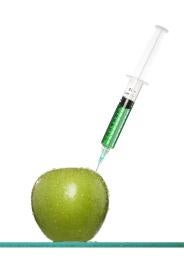-
As our readership is well aware, fruit juice and vegetable juice can be used under certain conditions as color additives in food under 21 C.F.R. 73.250 (fruit juice) and 21 C.F.R. 73.260 (vegetable juice). The color additive “fruit juice” is defined at § 73.250 as the juice expressed from mature varieties of fresh, edible fruits, or by the water infusion of the dried fruit. Similarly, the color additive “vegetable juice” is defined in § 73.260 as the juice expressed from mature varieties of fresh, edible vegetables, or by the water infusion of the dried vegetable. Of note, just because a specific plant material can be consumed as food does not necessarily mean that juice from such plant material meets the specifications of the aforementioned regulations.
-
Today, FDA announced the publication of Draft Guidance on “Fruit Juice and Vegetable Juice as Color Additives in Food” to assist manufacturers in determining whether a color additive derived from a particular plant material meets the specifications for fruit juice under § 73.250 or vegetable juice under § 73.260. This guidance, including FDA’s interpretation of the terms used in § 73.250 and § 73.260, is limited to these specific color additive regulations. The Agency notes that this guidance does not address the use of fruit- or vegetable-derived color additives that are authorized under different color additive regulations or that are the subject of a color additive petition.
-
The draft guidance issued today follows numerous inquiries submitted to FDA over the years regarding whether certain color additives made from various plant materials would meet the specifications in the fruit juice or vegetable juice color additive regulations. The FDA web page that discusses the draft guidance includes a chart (not in the guidance itself) of the Agency’s responses to questions about whether juice made from a particular source would comply with 21 CFR 73.250 or 73.260 (see here). The draft guidance published today addresses many of the same points noted in FDA’s responses to industry questions over the years. Most notably, in its draft guidance, the Agency emphasizes that “only minimal processing methods may be used for the production of the color additives fruit juice and vegetable juice. Such processing does not fundamentally alter a raw fruit or vegetable.” Other than drilling down on this point (with several examples), the draft guidance offers no further new clarity on the processing of the fruit or vegetable into juice, or the extent to which processing is permitted under the regulation.
-
FDA is currently accepting comments on the draft guidance; comments submitted to FDA by February 13, 2017 will be considered in the development of the final version of the guidance.
FDA Issues Draft Guidance on “Fruit Juice and Vegetable Juice as Color Additives in Food”
Wednesday, December 14, 2016



 i
i

